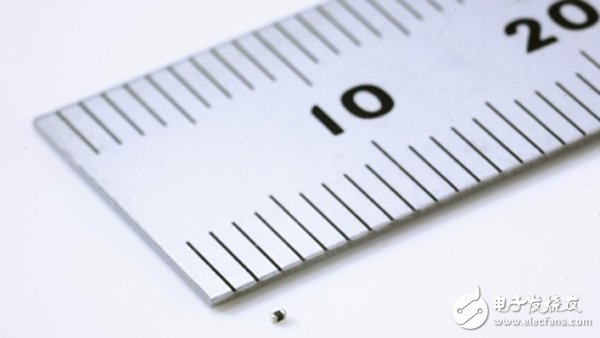The reason for using patch beads and chip inductors is whether the use of patch beads or chip inductors is mainly in applications. A chip inductor is required in the resonant circuit. When it is necessary to eliminate unwanted EMI noise, the use of patch beads is the best choice.
1, the unit of the magnetic beads is ohms, not Hunter, this should pay special attention. Since the unit of the magnetic bead is nominally based on the impedance it produces at a certain frequency, the unit of impedance is also ohms. The magnetic field DATASHEET generally provides a characteristic curve of frequency and impedance, generally based on 100MHz, such as 1000R 100MHz, meaning that the impedance of the magnetic bead is equivalent to 600 ohms at 100MHz.
2. The ordinary filter is composed of lossless reactance components. Its role in the line is to reflect the stopband frequency back to the signal source. Therefore, this type of filter is also called a reflection filter. When the reflection filter does not match the source impedance, a portion of the energy is reflected back to the source, causing an increase in the level of interference. In order to solve this drawback, a ferrite magnetic ring or a magnetic bead sleeve can be used on the incoming line of the filter, and the eddy current loss of the high frequency signal is utilized by the nuzzle or the magnetic bead to convert the high frequency component into heat loss. Therefore, the magnetic ring and the magnetic beads actually absorb the high-frequency components, so they are sometimes referred to as absorption filters.

Different ferrite suppression elements have different optimal suppression frequency ranges. Generally, the higher the magnetic permeability, the lower the frequency of suppression. In addition, the larger the volume of the ferrite, the better the suppression effect. Some large cattle research on the Internet found that when the volume is constant, the long and thin shape is better than the short and thick one, and the smaller the inner diameter, the better the suppression effect. However, in the case of DC or AC bias current, there is also a problem of ferrite saturation. The larger the cross-section of the suppressing element, the less likely it is to saturate and the greater the bias current that can be withstood. When the EMI absorption magnetic ring/bead suppresses the differential mode interference, the current value through it is proportional to its volume, and the two are out of regulation, causing saturation, which reduces the performance of the component; when suppressing common mode interference, the two wires of the power supply (positive and negative) At the same time, through a magnetic ring, the effective signal is a differential mode signal, the EMI absorption magnetic ring/magnetic bead has no influence on it, and for the common mode signal, it shows a large inductance. A better method of using the magnetic ring is to repeatedly circulate the wire passing through the magnetic ring to increase the inductance. According to its suppression principle of electromagnetic interference, its suppression can be reasonably used.
The ferrite suppression element should be installed close to the source of the interference. For the input/output circuit, it should be as close as possible to the entrance and exit of the shield case. For the absorption filter composed of the ferrite magnetic ring and the magnetic beads, in addition to the use of high magnetic permeability consumable materials, it is also necessary to pay attention to its application. They exhibit a resistance of about ten to several hundred ohms in the line for high frequency components, so its role in high impedance circuits is not obvious. Instead, in low impedance circuits such as power distribution, power or RF circuits. Use will be very effective.
Ferrite is widely used in EMI control because it can attenuate higher frequencies while allowing lower frequencies to pass almost unimpeded. The magnetic ring/magnetic beads for EMI absorption can be made into various shapes and are widely used in various applications. For example, on the PCB board, it can be added to DC/DC modules, data lines, power lines, etc. It absorbs high-frequency interference signals on the line, but does not generate new poles in the system, and does not damage the stability of the system. It is used in conjunction with the power filter to complement the high-frequency performance of the filter and improve the filtering characteristics of the system.
Magnetic beads are designed to suppress high-frequency noise and spikes on signal lines, power lines, and the ability to absorb electrostatic pulses.
Magnetic beads are used to absorb ultra-high frequency signals. Like some RF circuits, PLLs, oscillator circuits, and ultra-high frequency memory circuits (DDR SDRAM, RAMBUS, etc.), it is necessary to add magnetic beads to the input part of the power supply. Energy components, used in LC oscillator circuits, low-frequency filter circuits, etc., the application frequency range rarely exceeds 50MHZ.
The function of the magnetic beads is mainly to eliminate the RF noise existing in the transmission line structure (circuit). The RF energy is an AC sine wave component superimposed on the DC transmission level. The DC component is a useful signal required, and the RF RF energy is useless. Electromagnetic interference is transmitted along the line and radiated (EMI). To eliminate these unwanted signal energies, the patch bead acts as a high frequency resistor (attenuator) that allows the DC signal to pass through and filters out the AC signal. Usually the high frequency signal is above 30MHz, however, the low frequency signal will also be affected by the patch magnetic beads.
The patch magnetic beads are composed of a soft ferrite material and constitute a monolithic structure with a high volume resistivity. The eddy current loss is inversely proportional to the resistivity of the ferrite material. The eddy current loss is proportional to the square of the signal frequency. Benefits of using patch beads: miniaturization and lightweighting have high impedance in the RF noise frequency range, eliminating electromagnetic interference in the transmission line. Close the magnetic circuit structure to better eliminate the crosstalk of the signal. Excellent magnetic shielding structure. Reduce the DC resistance to avoid excessive attenuation of the wanted signal. Significant high frequency and impedance characteristics (better elimination of RF energy). Parasitic oscillations are eliminated in the high frequency amplifying circuit. Effective operation ranges from a few MHz to a few hundred MHz.
Here are some suggestions for choosing the right core for magnetic beads:
1. What is the frequency range of the unwanted signal;
Second, who is the source of noise;
3. Is there room for placing magnetic beads on the PCB?
Fourth, how much noise attenuation is needed;
5. What are the environmental conditions (temperature, DC voltage, structural strength);
6. What is the circuit and load impedance?
The first three can be judged by observing the impedance frequency curve provided by the manufacturer. All three curves in the impedance curve are very important, namely resistance, inductive reactance and total impedance. The total impedance is described by ZR22Ï€fL()2+:=fL. From this curve, select the type of bead that has the largest impedance in the frequency range where attenuation is desired and the signal attenuation is as small as possible at low frequencies and DC. The impedance of the chip bead will be affected by the excessive DC voltage. In addition, if the operating temperature rises too high or the external magnetic field is too large, the impedance of the bead will be adversely affected. You can also go to the Shenzhen Electronics Show to pick. The reason for using patch beads and chip inductors is whether the use of patch beads or chip inductors is mainly in applications. A chip inductor is required in the resonant circuit. When it is necessary to eliminate unwanted EMI noise, the use of patch beads is the best choice.
Application of chip beads and chip inductors:
Chip inductors: radio frequency (RF) and wireless communications, information technology equipment, radar detectors, automobiles, cellular phones, pagers, audio equipment, PDAs (personal digital assistants), wireless remote control systems and low-voltage power supply modules.
Patch magnetic beads: clock generation circuit, filtering between analog circuit and digital circuit, I/O input/output internal connector (such as serial port, parallel port, keyboard, mouse, long distance telecommunication, local area network), radio frequency (RF) circuit Between high-frequency conducted interference in the power supply circuit and EMI noise suppression in computers, computers, video recorders (VCRS), television systems, and mobile phones, and interference-prone logic devices.

Dongguan City Diadia Industry Co.,Ltd , https://www.diadiabag.com